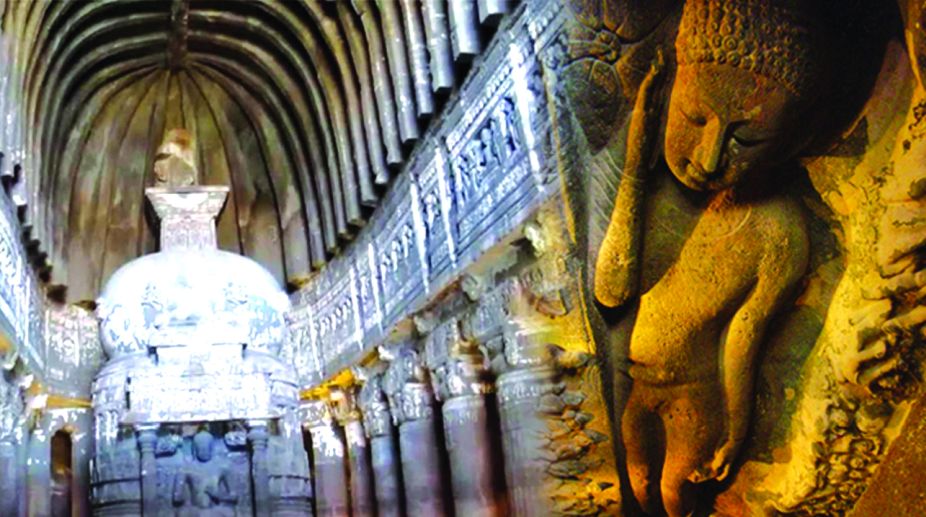A scientific exploration of herbal supplements for well-being in India
A country like India boasts a rich cultural heritage with well-established traditional health practices, including Ayurveda.

The cities of India offer a rich canvas to explore the hidden layers of the past. This multi-layered mosaic of heritage buildings assumes many forms and meanings. The most challenging of them is probably associated with our colonial legacy. Whom should this rich heritage be attributed to? Should we protect a past dominated by alien superimposition? How do we go about sharing the built heritage of India?
The last three decades have witnessed many initiatives through governmental, private and community-oriented programmes that have explored shared built heritage across India.
The National Scientific Committee for Shared Built Heritage and the International Council on Monuments and Sites organised a one-day symposium in Kolkata recently on the theme “Shared built heritage of Bengal: issues and opportunities.” It was part of a tour organised for the International Scientific Committee of Shared Built Heritage focusing on Kolkata, Serampore, Chandernagore, Chinsurah and Murshidabad. The participants were select international delegates who subsequently attended the 19th General Assembly and Scientific Symposium 2017 for ICOMOS in New Delhi on “Heritage and democracy”. The Kolkata Symposium, held at the ICCR was designed to provide a platform for Shared Built Heritage of Bengal as a dialogue between Indian and international delegates. Issues discussed included policy, governance, role of the private and voluntary sector accompanied by learning from academic and professional projects underway in the region. This public event was attended by key decision makers, students, professionals and Kolkata citizens in general.
Advertisement
The event began with a welcome address, an introduction to the symposium and the position paper by the two main organisers, namely, Aishwarya Tipnis and Kamalika Bose. This was followed by the keynote address by Siegfried RCT Enders on “Shared built heritage: international perspective.” The first address was by Benedict Goes which covered the Dutch perspective while the second one was by Rui Fernandes Povoas, looking at the Portuguese experience.
In the first session, Bose presented a fascinating talk on the Kolkata experience with reference to the Chinatown project, a community-based programme. She said that the original Chinatown area has been supplanted to a great extent by Tangra, the new Chinatown, with its ethnic restaurants and dragon dances. Following was Neeta Das who spoke on the Scottish Cemetery restoration project. Bose then hosted a panel discussion on the public sector and institutions perspective at which several leading Kolkata architects, including Manish Chakrabarti, Partha Ranjan Das of the West Bengal Heritage Commission and Indrani Sarkar, lately of Fort William, spoke.
The afternoon session began with a presentation by Tipnis on “Shared built heritage: French and Dutch perspectives.” She highlighted conservation efforts underway in the Hugli European settlements of Chandernagore and Chinsurah. Flemming Aalund followed her with a talk on the Danish perspective on the Serampore Initiative and subsequently Nilina Deblal and James Simpson presented detailed vignettes on Roxburgh House, Indian Botanical Gardens, Howrah and Scottish Built Heritage in Bengal, including Scottish Church College. The final session of the symposium was a panel discussion on the private sector and community-centric perspective chaired by Tipnis at which Kamal Banerjee of INTACH spoke on Bengal terracotta temples.
The main focus of the symposium was the cultural landscape of the settlements by river Hugli, initiated by European merchant entrepreneurs from Renaissance times and the postcolonial megacity of Calcutta. A considerable interest is being taken in conserving their urban built heritage. The tour schedule included walks around conserved landscapes such as Dalhousie Square, north Kolkata mansions and great houses of the Indian aristocracy, and trips to the trading settlements by river Hugli, namely, Danish Serampore, French Chandernagore, Dutch Chinsurah and Nawabi Murshidabad while Calcutta, the capital of British India, remained in focus as the centre point and chief location of interest.
(The writer is associate, Centre for Urban Economic Studies, University of Calcutta)
Advertisement